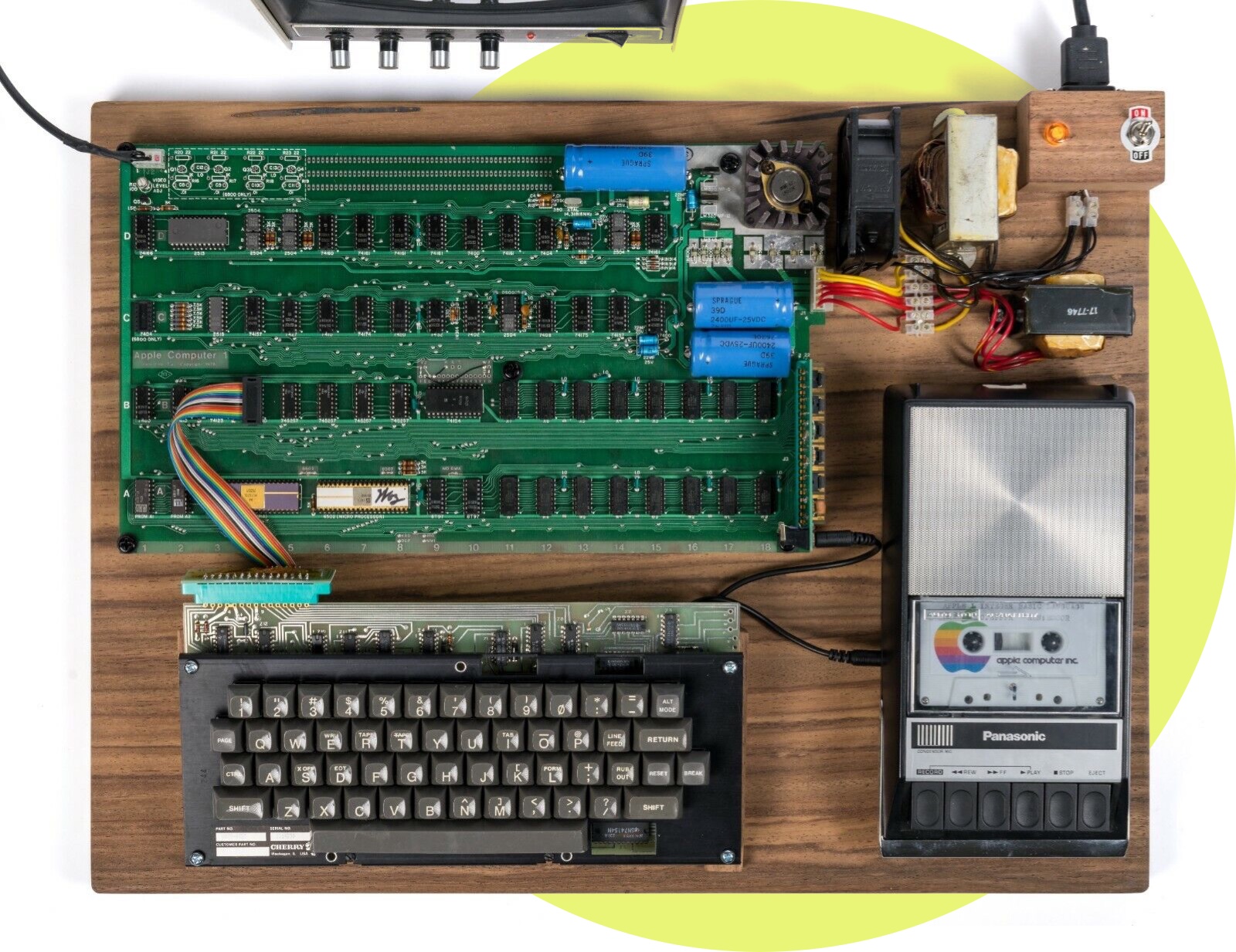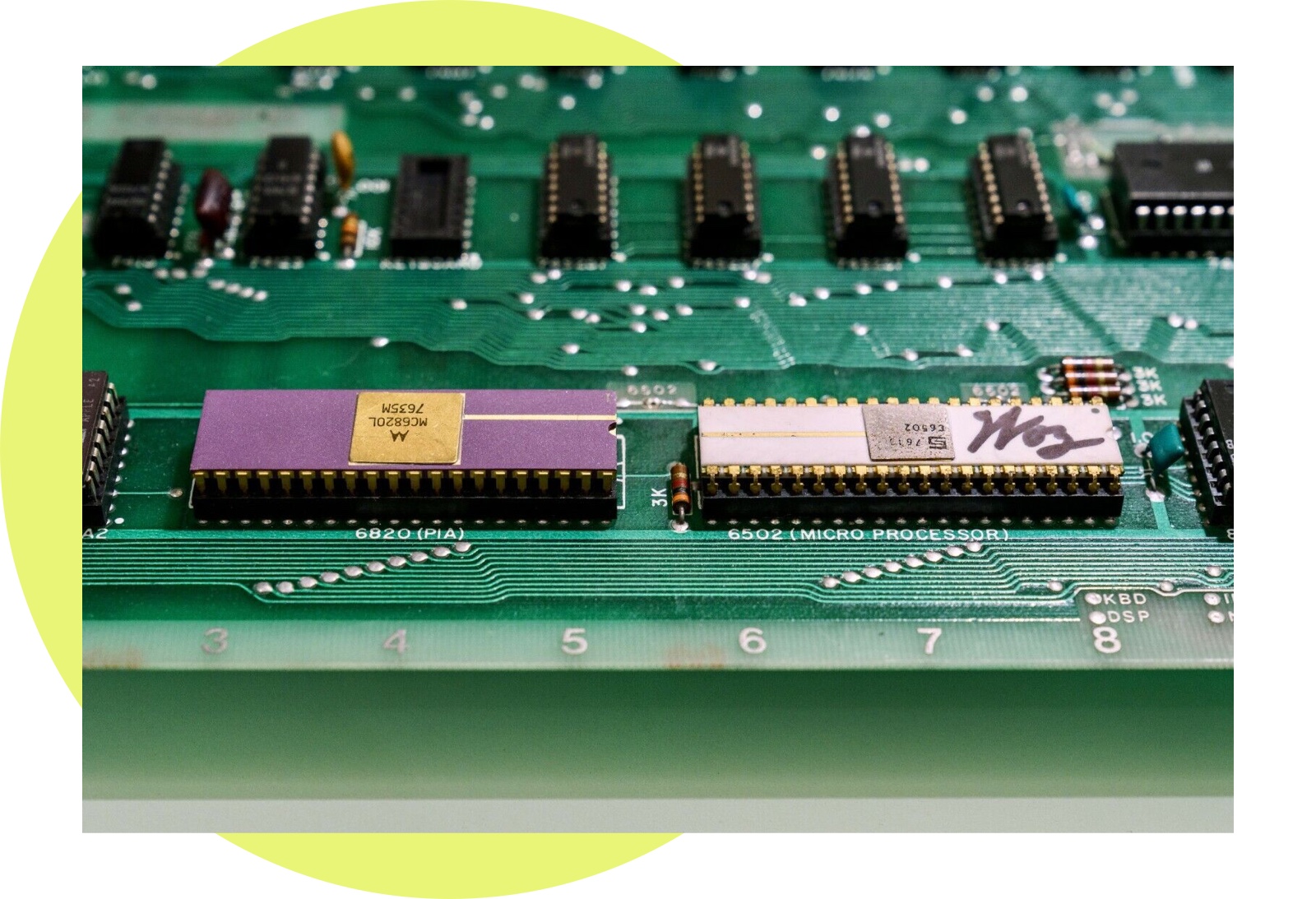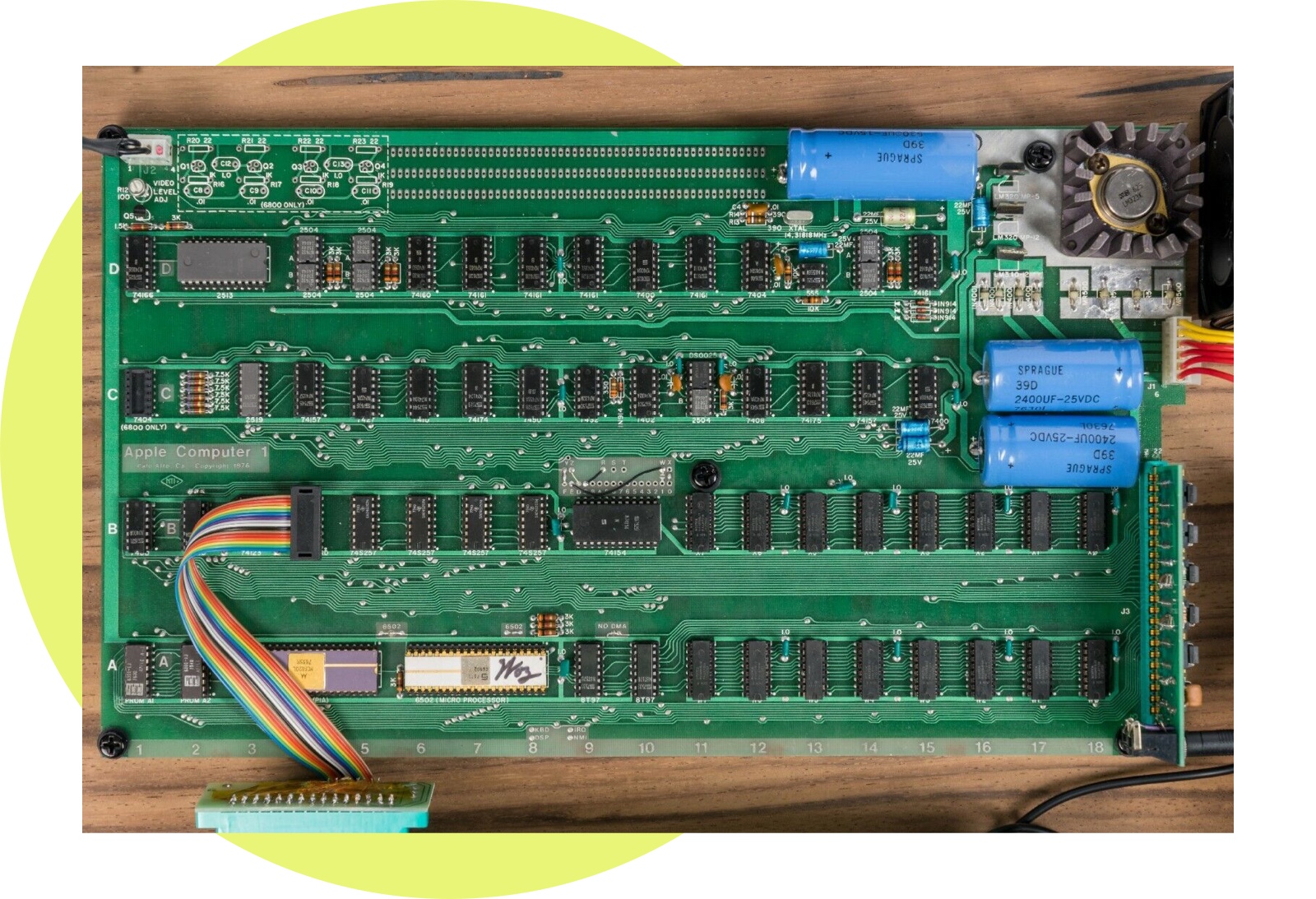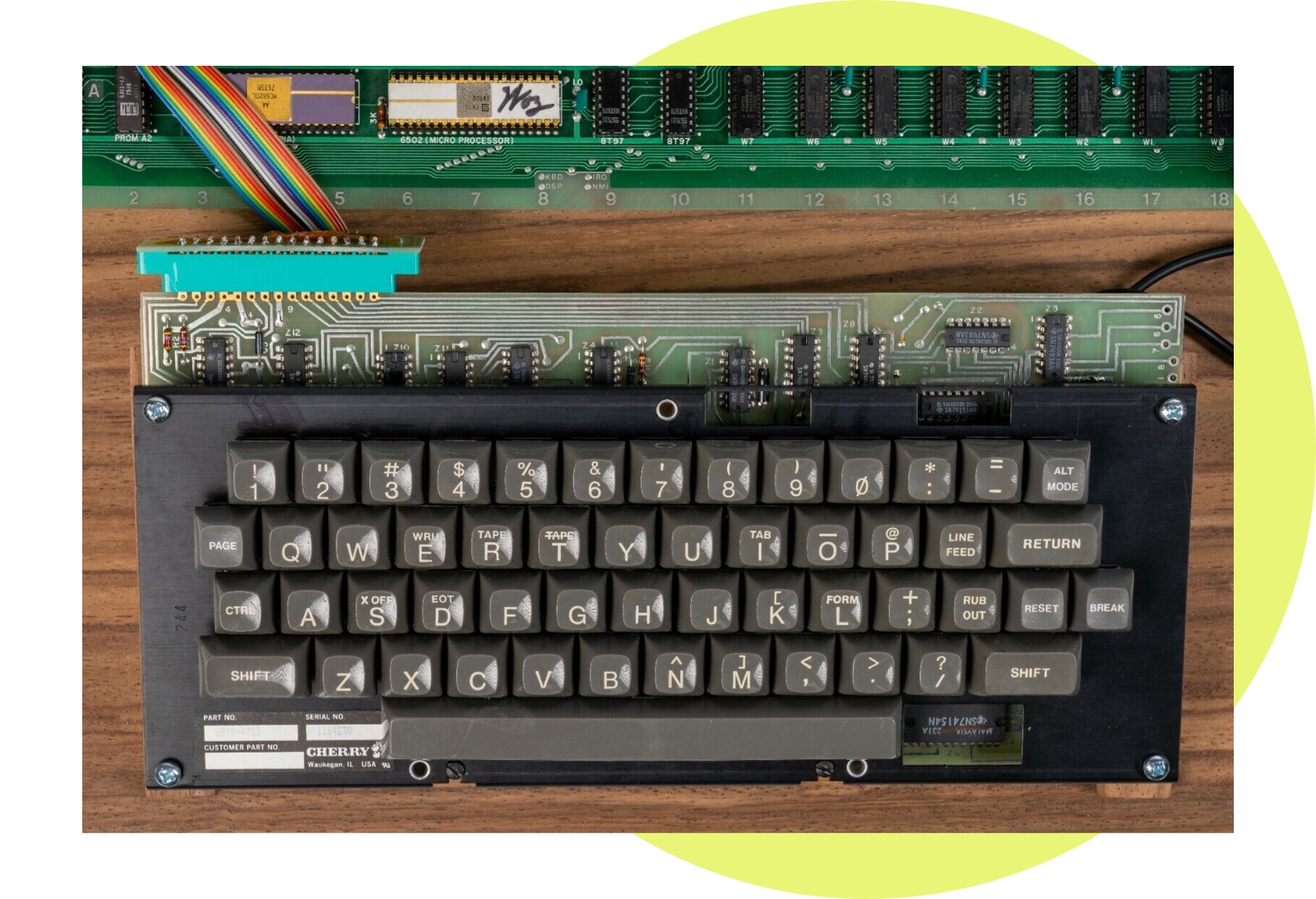

The Apple-1 Computer, a Vintage Tech Grail That Ignited the World of Personal Co...
source link: https://www.ebayinc.com/stories/news/the-apple-1-computer-a-vintage-tech-grail-that-ignited-the-world-of-personal-computing/
Go to the source link to view the article. You can view the picture content, updated content and better typesetting reading experience. If the link is broken, please click the button below to view the snapshot at that time.
The Apple-1 Computer, a Vintage Tech Grail That Ignited the World of Personal Computing
eBay News Team
Only a few dozen of the computers are known to exist in the world today. And recently on eBay, one sold for about $340,000 at auction by Dubai seller Jimmy Grewal.
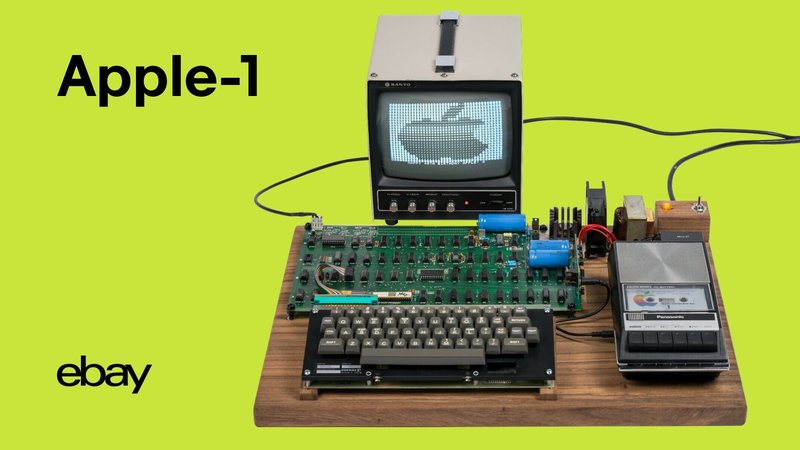
At first glance, the Apple-1 computer looks like a disassembled calculator that’s been plugged into a cassette tape recorder, a typewriter and an old-school television. And yet this early invention laid the foundation for today’s world of personal computers.
About 200 were built by the very first iteration of Apple, known then as Apple Computer Company, in the mid-1970s. Only about 82 are believed to have survived until now – with one fetching approximately $340,100 at auction on eBay last month.
The seller, Jimmy Grewal, is a long-time fan of historic Apple computers and runs The AAPL Collection out of his hometown of Dubai. His private collection, one of the largest in the world, focuses on the first three decades of Apple’s history, including the never-released rarities of the legendary company.Grewal’s interest in Apple products began in the early 1980s; his school, the American School of Dubai, acquired Apple II computers in the late 1970s. “By the time I was in junior high, I was pretty hooked, and I knew that I wanted to do something related to computers and software,” he says.
He began collecting electronics as a college freshman, after spotting an original 1984 Macintosh while helping a friend thrift-shop for furniture. The computer needed some repairs, so he kept searching around for parts, which inevitably led to a growing collection of computers. “By the time I graduated, I had ten computers,” says Grewal. “They were mostly hidden under my bed, or I’d use them as the legs for a desk.”. Eventually, this hobby would become The AAPL Collection.
Grewal isn’t alone in his passion for vintage tech. When an Apple-1 computer goes up for sale, it typically commands hundreds of thousands of dollars in bids, mainly from enthusiasts eyeing to own a piece of electronics history.The Apple-1 first went on sale in 1976 for $666.66. (The price reflects an engineer’s thinking; it was sold to retailers at a one-third markup from a $500 wholesale price. Steve Wozniack, who designed the computer, also has said that he likes repeating numbers.) Personal computers, at the time, were not the household essential that they are today. Computer owners were more like dedicated hobbyists, assembling machines from DIY kits sold by tiny companies.
What was unique about the Apple-1 was that it came with a complete circuit board. This didn’t mean that it was as easy to use as, say, an iMac. It still needed power assemblies; a keyboard (many were compatible); storage (it used, amazingly enough, cassette tapes); and a display. It also didn’t come with a case, for cost reasons. Most Apple-1 owners built their own, or mounted the computer to a nice plank of wood.
Even so, the Apple-1 was much easier to put together than the other hobbyist kits. For one thing, the most difficult item, the circuit board, was complete — no need to break out the soldering gun. It also didn’t even need a specialized monitor, as it could plug into any television in much the same way as an early video game console.
As an early computer model, the Apple-1 had no delete key or function. If you wanted to change something, you had to start over from the beginning of the line. “Imagine that you’re writing from a computer to a printer, but instead of burning through reams of paper, it’s just a screen that scrolled,” says Grewal. It only supported 64 characters, and did not support lowercase letters.About 175 of the original 200 Apple-1 computers were sold, and approximately 82 are still known to exist. Back then, Steve Wozniak and Steve Jobs’ goal had been to develop a proof of concept for their nascent computer business. The two Steves sold everything they could — a VW Microbus for Jobs, a valuable programmable calculator for Wozniak — to get the money to build, by hand, a few Apple-1 machines.
“It’s like anything that’s hand-built or hand-designed at low volume,” Grewal says. “Each one has a little quirk [that has to be overcome] to get it running and working reliably.”
What’s so fascinating about the Apple-1 is what it has led to, and its place in computing history. Wozniak built the Apple-1 on his own, and its ease of use and design caught the eye of Steve Jobs at a Homebrew Computer Club meeting. The combination of Wozniak’s machine and Jobs’s relentless salesmanship and marketing foreshadowed the company’s much larger dreams.
Jobs was able to take the Apple-1 around to possible investors, and eventually found Mike Markkula, who had made millions in the early computing world. Markkula personally invested in Apple, based on the Apple-1 and its charismatic marketer, which gave Wozniak and Jobs the funding to create the Apple II. The Apple II, which actually looks like a computer, became a wild success, and Apple was off and running.
The Apple-1 is a fascinating collector’s item because of its place in the history of computing, but also due to its extreme rarity. To find an example like Grewal’s, which is fully operational and contains only original or (in a few minor instances) period-correct components is incredibly special.
This particular computer was, Grewal thinks, the first Apple product ever used outside North America, as it was owned by a European developer. Even more amazing is that this particular model has a personal connection to the Steves themselves.
“I got to meet Woz in Dubai in November last year, and show him the board. I have a video of him holding the board and signing it,” says Grewal. If you’re looking for computer history, what could be more direct than that?
Recommend
About Joyk
Aggregate valuable and interesting links.
Joyk means Joy of geeK
